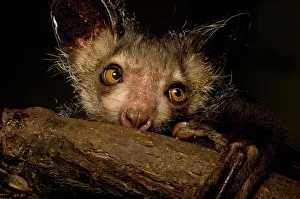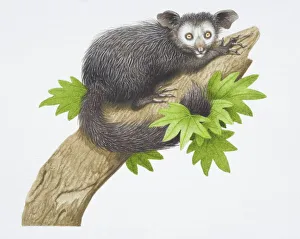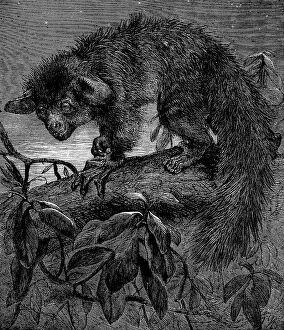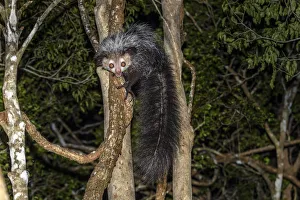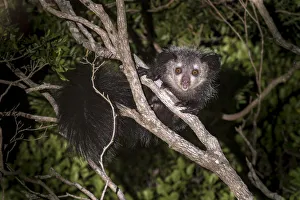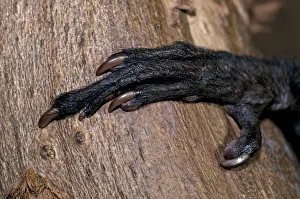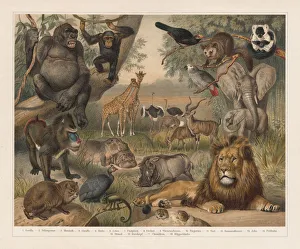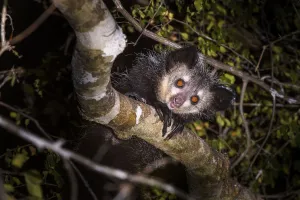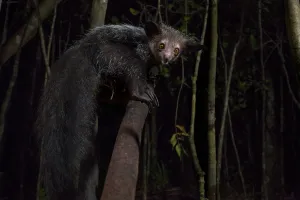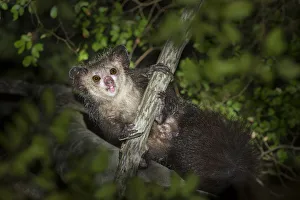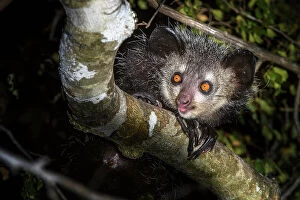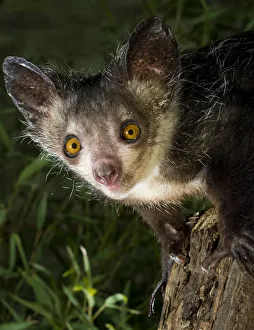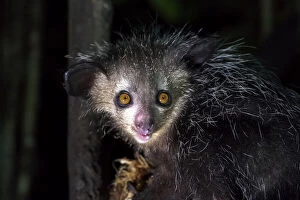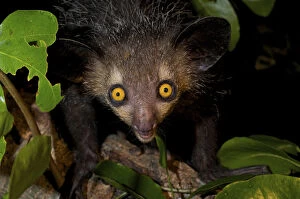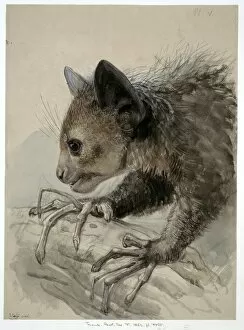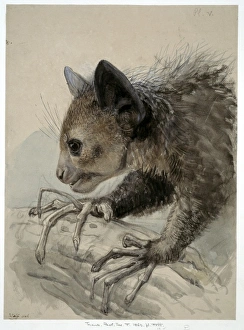Daubentonia Madagascariensis Collection
The Aye-aye (Daubentonia madagascariensis) is a fascinating and endangered species native to the beautiful island of Madagascar
All Professionally Made to Order for Quick Shipping
The Aye-aye (Daubentonia madagascariensis) is a fascinating and endangered species native to the beautiful island of Madagascar. With its unique appearance and intriguing behaviors, this creature captures the attention of wildlife enthusiasts worldwide. One captivating image showcases an adult Aye-aye actively foraging in the forest canopy at night. Its large eyes gleam with determination as it searches for beetle grubs hidden within wood. This nocturnal hunter relies on its long, distinctive fingers to extract these tasty treats from their hiding places. In another close-up shot, we get a glimpse of the Aye-aye's hand, which further highlights its extraordinary adaptations. These elongated digits are perfectly designed for reaching into crevices and extracting food – a testament to nature's ingenuity. Despite being active during nighttime hours, this remarkable primate can still be observed if you're lucky enough to spot one during your visit to Madagascar. One photograph shows an Aye-aye perched on a tree branch, looking down with curiosity and intrigue in Bekaraoka Forest. Sadly, due to habitat loss and hunting pressures, the Aye-aye population is under threat. Conservation efforts are crucial in ensuring their survival for future generations. The Durrell Wildlife Conservation Trust in Jersey has taken steps towards protecting this species by creating controlled conditions where photographers captured stunning images of captive individuals extracting beetle grubs from wood. Let us cherish these glimpses into the world - a truly unique primate that reminds us of both nature's beauty and fragility. Together, we can work towards safeguarding their existence so that they may continue enchanting us with their presence amidst Madagascar's rich biodiversity.

